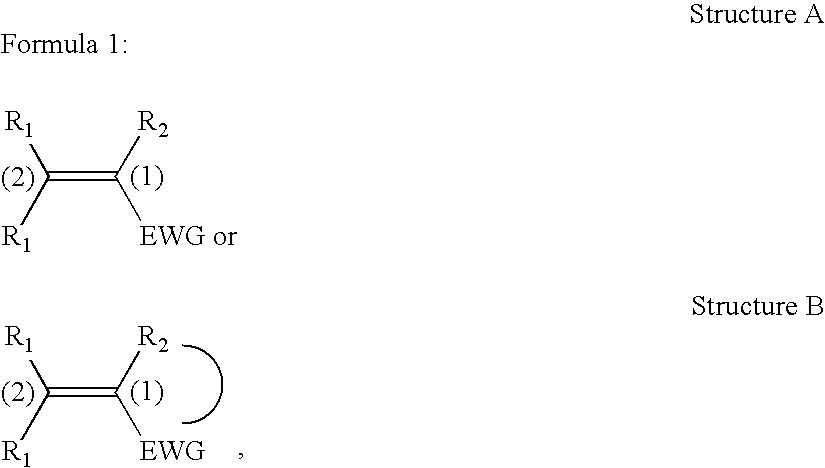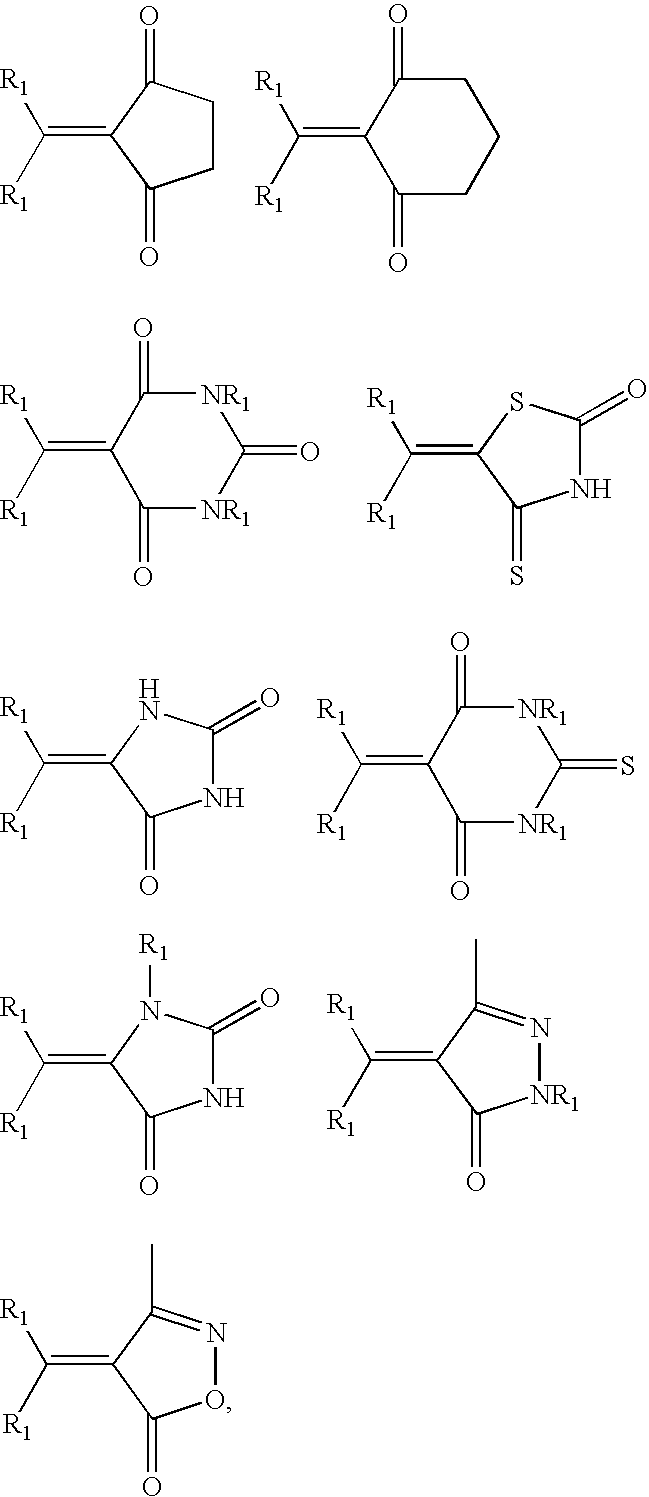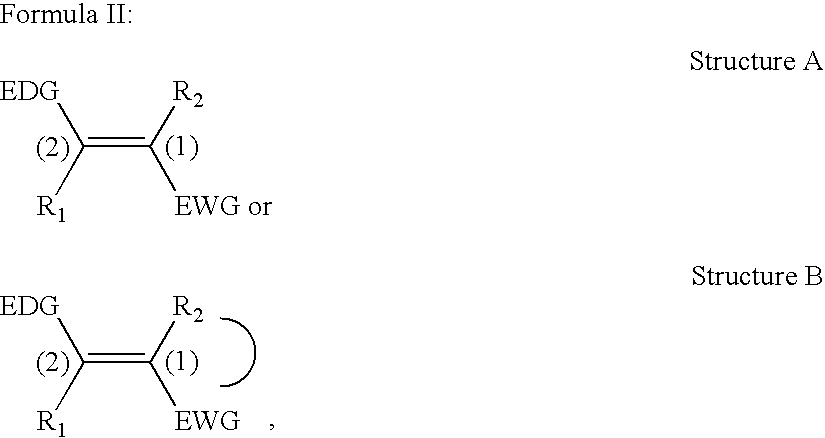Non-aromatic chromophores for use in polymer anti-reflective coatings
a technology of anti-reflective coating and chromophores, which is applied in the direction of auxillary/base layers of photosensitive materials, instruments, photosensitive materials, etc., can solve the problems of degrading the resolution of the photoresist, affecting the image quality of the processed photoresist, and activating radiation is reflected back into the photoresist,
- Summary
- Abstract
- Description
- Claims
- Application Information
AI Technical Summary
Benefits of technology
Problems solved by technology
Method used
Image
Examples
Embodiment Construction
[0114] The following example sets forth preferred methods in accordance with the invention. It is to be understood, however, that this example is provided by way of illustration and nothing therein should be taken as a limitation upon the overall scope of the invention.
[0115] Poly(glycidyl methacrylate) was reacted with 2,4-hexadienoic acid (a non-aromatic, deep ultraviolet chromophore) at 100-110.degree. C. for 24 hours with a benzyltriethylammonium chloride catalyst to form a solution of the dye-attached binder shown in Scheme A.
Scheme A--2,4-Hexadienoic Acid Attached to Poly(glycidyl methacrylate)
[0116] 25
[0117] The resulting polymer binder was combined in solution (with 1-methoxy-2-propanol and ethyl lactate as the solvents) with a glycouril-formaldehyde cross-linking agent and an acid catalyst (p-toluenesulfonic acid) to form a BARC composition. The concentrations of the various compounds utilized in the composition were as follows:
3 Compounds Parts by Weight.sup.a Polymer Solu...
PUM
| Property | Measurement | Unit |
|---|---|---|
| wavelengths | aaaaa | aaaaa |
| wavelengths | aaaaa | aaaaa |
| exposing wavelengths | aaaaa | aaaaa |
Abstract
Description
Claims
Application Information
 Login to View More
Login to View More - R&D
- Intellectual Property
- Life Sciences
- Materials
- Tech Scout
- Unparalleled Data Quality
- Higher Quality Content
- 60% Fewer Hallucinations
Browse by: Latest US Patents, China's latest patents, Technical Efficacy Thesaurus, Application Domain, Technology Topic, Popular Technical Reports.
© 2025 PatSnap. All rights reserved.Legal|Privacy policy|Modern Slavery Act Transparency Statement|Sitemap|About US| Contact US: help@patsnap.com



